Don’t be fooled by the dull outer appearance of agates (semi-precious gems). When they’re cut and polished, they reveal intricate structures and patterns.
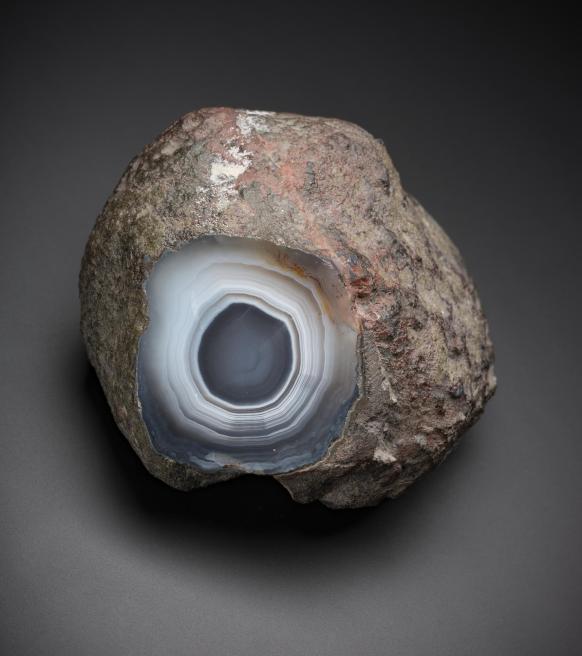
The name comes from the ancient Greek name for the Dirillo River in Sicily – Achates, where large deposits were found. Although they can be found all over the world, Scotland has some of the most varied examples.
How did they form?
Hundreds of millions of years ago, volcanic eruptions caused lava to flow and cool over large areas of central and western Scotland. Most Scottish agates formed in the spaces created by gas bubbles trapped in the cooling lava.
The material that forms agates is more durable than the surrounding rock, which can weather away after millions of years, leaving the agates behind.

Naming an agate
Varieties of agate are often given names reflecting their cut and appearance, such as flame, fortified and moss.
Flame agates have nothing to do with flames. Instead, they’re named for the shape of their banding.
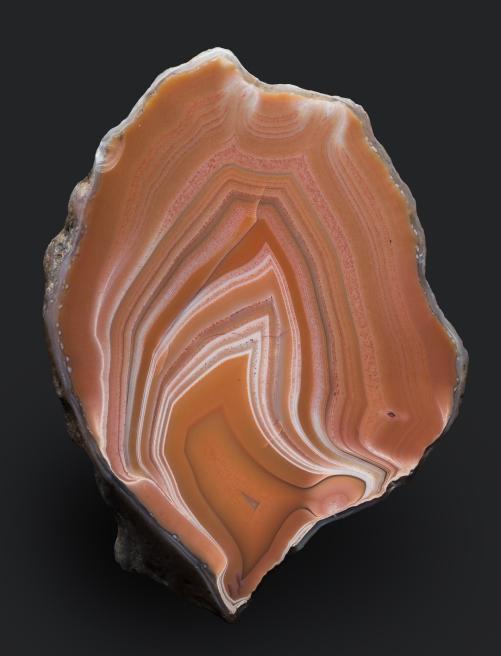
Fortification agates, which are some of the most common varieties, resemble impenetrable fortified walls.
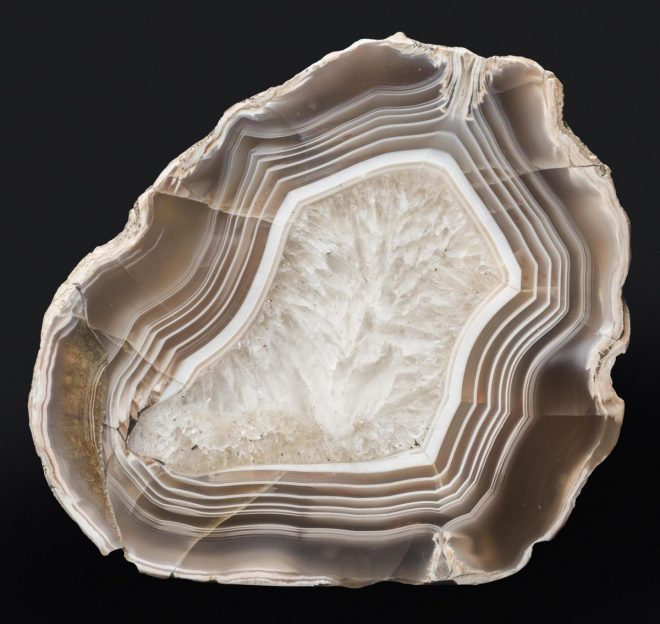
There are also moss agates, which have inclusions of dark green, black or red minerals. This gives them the appearance of moss or ferns.

Four agate facts
1) Professor Matthew Forster Heddle was Scotland’s most famous mineralogist. He collected thousands of agates, several of which are on display until early 2019. Many of the ones he collected were unusual or broken, which helped him investigate their formation.
2) Many agates have been collected from the Blue Hole, arguably Scotland’s most famous agate location, including this one (which looks like Bass Rock in East Lothian). However, the exact location is now unknown.
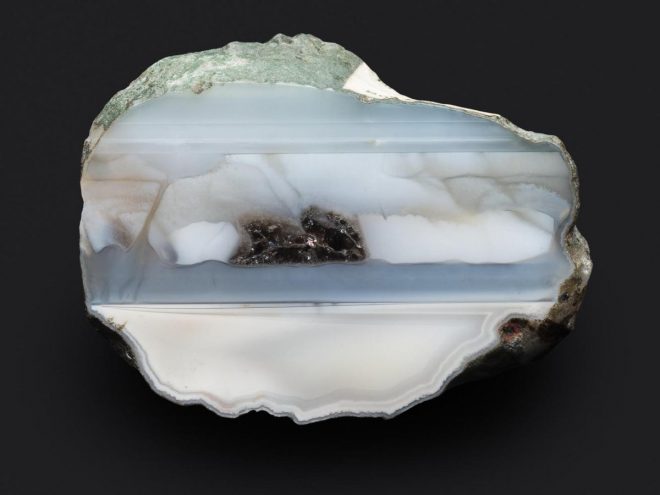
3) Lapidary, the cutting and polishing of gemstones and semi-precious stones, is one of the oldest human activities, dating back thousands of years. Worked agate has even been found in Neolithic sites in Scotland.
4) In addition to being beautiful, they’re hard and durable. Agates have been used for centuries to produce decorative items such as jewellery, as well as hardwearing items like mortars and pestles.
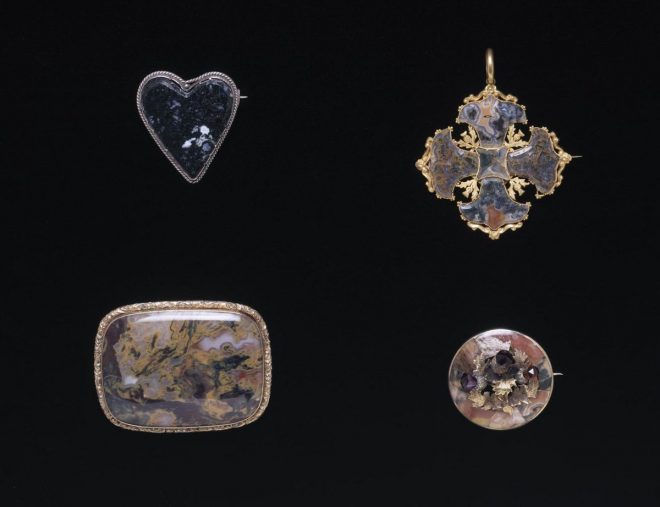
If you’d like to know more about agates, you can join a local lapidary club or visit Hidden Gems: Scotland’s Agates at the National Museum of Scotland in Edinburgh until 6 January 2019.
